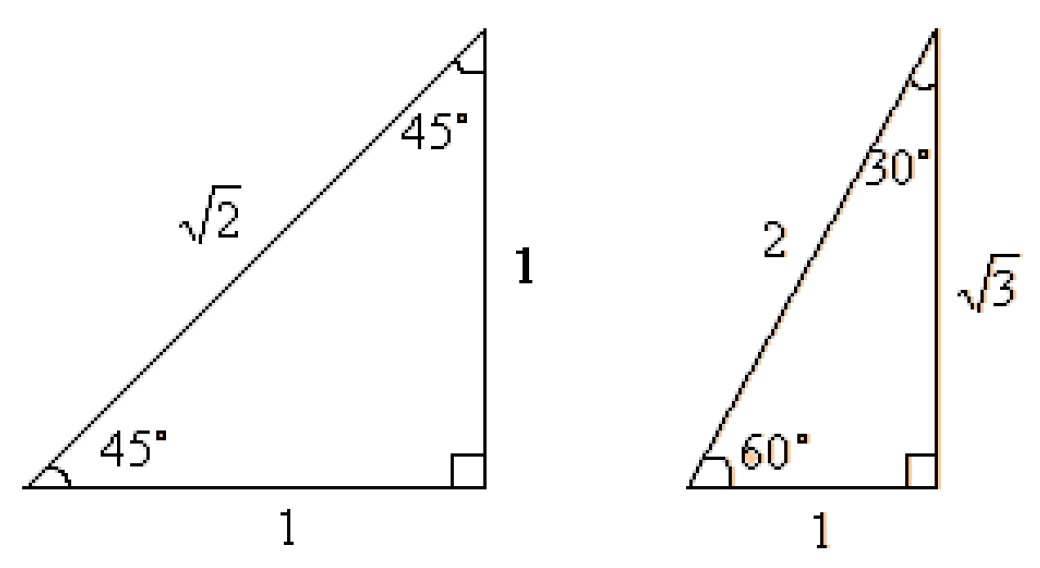5. The Pythagorean theorem and memory triangles*
The Pythagorean theorem and memory triangles
The Pythagorean theorem
In a right triangle, the sum of the squares of the triangle's legs is equal to the square of the triangle's hypotenuse.
[[$$ a^2 + b^2 = c^2 $$]]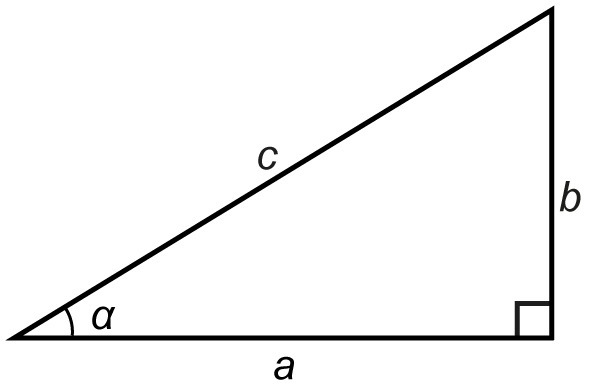
If the Pythagorean theorem is applied to a square or an equilateral triangle, the result is a memory triangle. The idea of memory triangles is that they can be used to determine the exact values of trigonometric functions for the angles [[$ 30 ° $]], [[$ 45 ° $]] and [[$ 60 ° $]] without using a calculator.
Example 1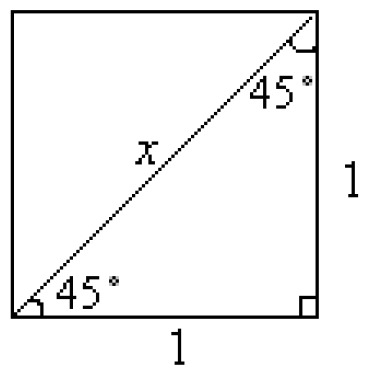
Consider a square with a side length of [[$ 1 $]]. Calculate the length of the square diagonal [[$ x $]] using the Pythagorean theorem.
Example 2
Consider an equilateral triangle with a side length of [[$ 2 $]]. Calculate the height of the triangle [[$ x $]] using the Pythagorean theorem.
[[$ \begin{align*} 2^2 &= 1^2 + x^2 \;\;\; {\color {green} {\text {Move the variables to the left of the equation and the constants to the right}}}\\ -x^2 &= -2^2 + 1^2 \;\;\;\;\;\; {\color {blue} | \; \cdot \left ( -1 \right )} \\ x^2 &= 4 - 1 \\ x^2 &= 3 \;\;\;\;\;\; {\color {blue} {\text {Take the square root of each side of the equation}}}\\ x &= ± \sqrt {3} \\ x &= \sqrt {3} \;\;\;\; {\color {red} {\text {Only a positive solution is valid because a length cannot be negative}}} \\ \end{align*} $]]Example 3
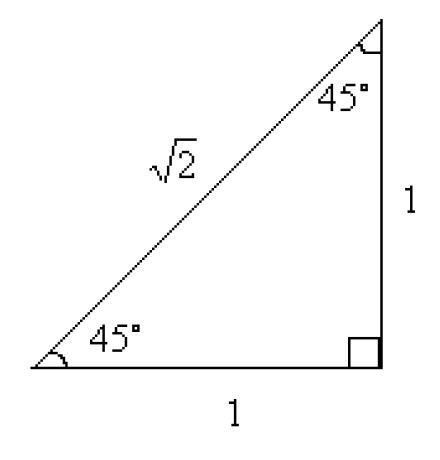
Determine the exact values of the following trigonometric functions for angle [[$ 45 ° $]] with the help of a memory triangle.
[[$ \sin 45° = \displaystyle\frac {1} {\sqrt {2}} $]]
[[$ \tan 45° = \displaystyle\frac {1} {1} = 1 $]]
Example 4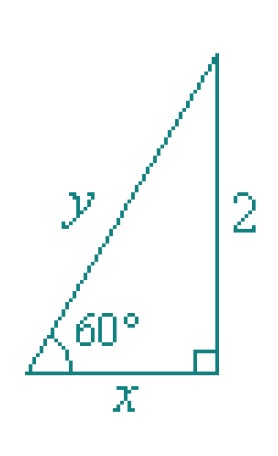
Calculate the following features from the adjacent triangle with the help of a memory triangle:
a) the length of the leg [[$ x $]]
b) the length of the hypotenuse [[$ y $]].
Solution:
Compare the sides of the triangle with the corresponding sides of the memory triangle and form a comparison.
a)
[[$ \begin{align*}
\displaystyle\frac {2} {x} &= \displaystyle\frac {\sqrt {3}} {1}
\;\;\;\;\; {\color {red} {\text {multiply both sides}}} \\
x\sqrt{3} &= 2 \cdot 1
\;\;\;\;\; {\color {blue} { | \; : \sqrt {3}}} \\
x &= \displaystyle\frac {2} {\sqrt {3}} \\
\end{align*} $]]
b) [[$ \begin{align*} \displaystyle\frac {2} {y} &= \displaystyle\frac {\sqrt {3}} {2} \;\;\;\;\; {\color {red} {\text {multiply both sides}}} \\ y\sqrt{3} &= 2 \cdot 2 \;\;\;\;\; {\color {blue} { | \; : \sqrt {3}}} \\ y &= \displaystyle\frac {4} {\sqrt {3}} \\ \end{align*} $]]
Answer: The length of the triangle's leg is [[$ \displaystyle\frac {2} {\sqrt{3}} $]]. The length of the hypotenuse is [[$ \displaystyle\frac {4} {\sqrt{3}}. $]]
Exercises
Basic exercises
2/05. Exercise 5.01
2/05. Exercise 5.02
2/05. Exercise 5.03
2/05. Exercise 5.04
2/05. Exercise 5.05
2/05. Exercise 5.06
2/05. Exercise 5.07
2/05. Exercise 5.08
2/05. Exercise 5.09
2/05. Exercise 5.10
2/05. Exercise 5.11
2/05. Exercise 5.12
2/05. Exercise 5.13
2/05. Exercise 5.14
2/05. Exercise 5.15
2/05. Exercise 5.16
2/05. Exercise 5.17
2/05. Submission folder for answers
Sinulla ei ole tarvittavia oikeuksia lähettää mitään.
